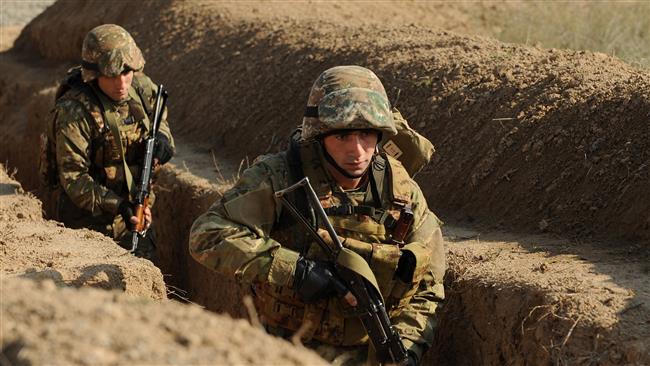WASHINGTON (A.W.)— On May 11, the United States Director of National Intelligence Daniel R. Coats published the U.S. Intelligence Community’s (IC) 2017 “Statement for the Record” entitled “Worldwide Threat Assessment of the U.S. Intelligence Community,” which includes a part on the increased tensions between Artsakh and Azerbaijan that took place in April 2016.

Armenian and Artsakh Armed Forces holding joint military exercises at a training ground near the town of Tigranakert, Artsakh, in 2014 (Photo: AFP)
The IC is a federation of 16 separate U.S. government agencies that work separately and together to conduct intelligence activities considered necessary for the conduct of foreign relations and national security of the United States. The statement that assesses potential threats to U.S. national security reflects the collective insights of the Intelligence Community.
The statement, which is divided into global and regional threats, includes subcategories like cyber threats, weapons of mass destruction, terrorism, and counterintelligence.
Relations between Armenia and Azerbaijan are addressed in the “Russia and Eurasia,” section of the regional threats division, in a subsection entitled “The Caucasus and Central Asia.”
The statement provides particular attention to the escalation of tensions between Artsakh and Azerbaijan and concludes that the situation is likely to remain in 2017. It also makes a reference to Azerbaijan’s economic difficulties and the possibility of Azerbaijan’s regime being challenged as a result.
“We in the Intelligence Community are committed every day to provide the nuanced, multidisciplinary intelligence that policymakers, warfighters, and domestic law enforcement personnel need to protect American lives and America’s interests anywhere in the world,” read a part of the report.
Below is the section on Armenia and Azerbaijan in its entirety:
***
Tensions between Armenia and Azerbaijan over the separatist region of Nagorno-Karabagh flared in April 2016, and both sides’ unwillingness to compromise and mounting domestic pressures suggest that the potential for large-scale hostilities will remain in 2017. In Azerbaijan, ongoing economic difficulties are likely to challenge the regime and increase its tendency to repress dissent to maintain power while it continues to try to balance relations with Russia, Iran, and the West.
Source: Armenian Weekly
Link: Artsakh Addressed in U.S. Intelligence Community Report
